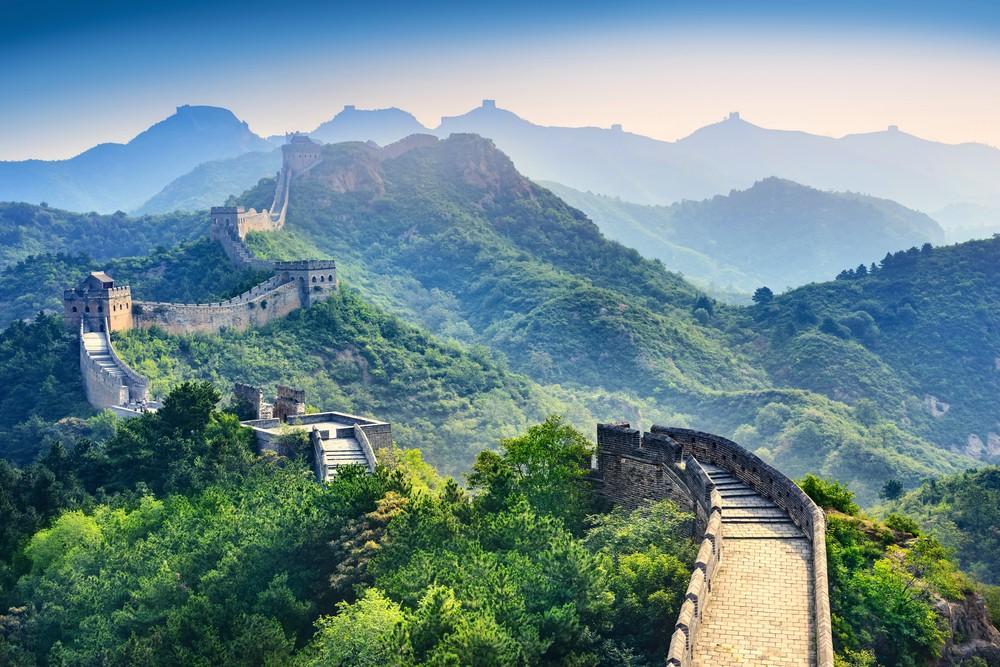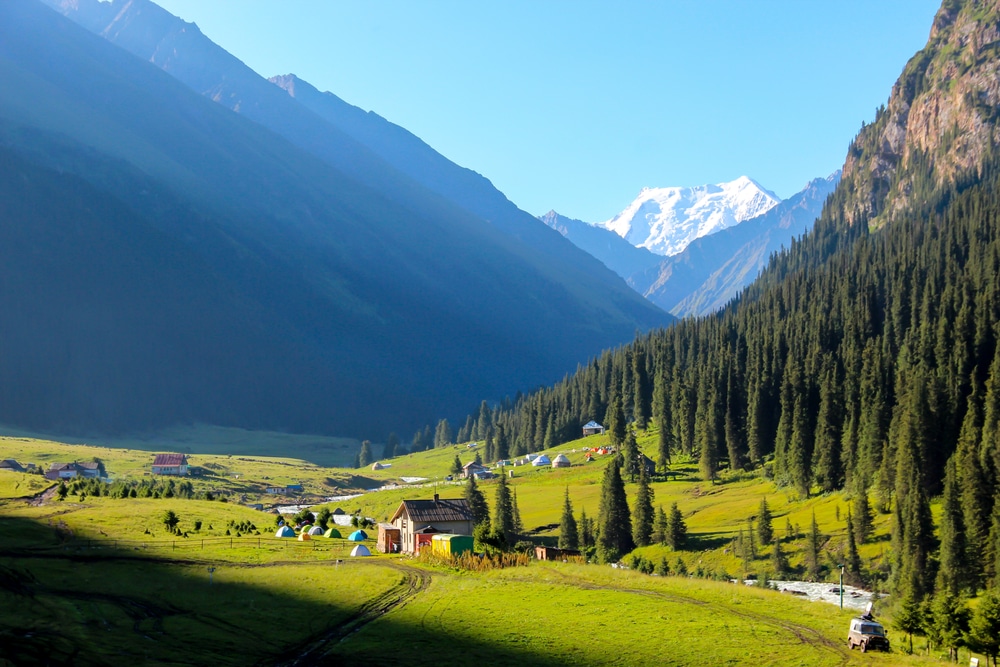New Delhi is currently the third largest city in the world with more than 27 million inhabitants. It is located in the north of India, less than 500 kilometers from the Himalayan mountains. India’s capital inspires tourists with its many contrasts. Western and typical Indian lifestyle, rich and poor as well as old and new are close together here.
Famous Sights in New Delhi
Red Fort

To the east of the old town is the Red Fort fortress and palace complex. It was built in the 17th century by order of the then Mughal emperor Shah Jahan. This is best known for the construction of the famous Taj Mahal. Since 2007, the red sandstone fort has been a UNESCO World Heritage Site.
Qutub Minar
Another UNESCO World Heritage Site in New Delhi is the 72-metre-high Victory and Watchtower Qutub Minar. It was built in the 13th century and is located on the Qutub complex site. The first Muslim mosque in India was also built there, the ruins of which can still be visited today.
Connaught Place
The center of the city is Connaught Place. On the circular streets, one of India’s largest trading centers is located in old colonial buildings. The countless shops, restaurants and cafes are popular with both tourists and locals.
India Gate and Presidential Palace
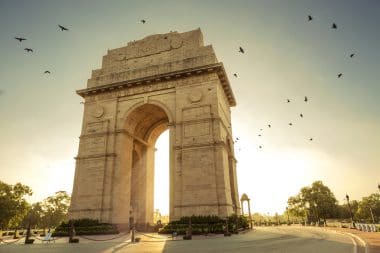
A historically important landmark is the India Gate. Among other things, the names of the almost 100,000 Indian and British war dead from the First World War are engraved in this triumphal arch. From there, the long boulevard Rajpath leads to Rashtrapati Bhavan, the official residence of the Indian president. The surrounding green areas invite you to picnic and walk.
Humayun’s Mausoleum
In 1993, the Hamayun Mausoleum was named a UNESCO World Heritage Site. It is the tomb of the second Indian Mughal Emperor Nasiruddin Muhammad Humayun and was built for him in the 16th century. Visually, it is reminiscent of the Taj Mahal, as similar plans were used for this structure.
Lodi Gardens
In the midst of the hustle and bustle of New Delhi is a sprawling oasis of calm. The Lodi Gardens park includes several mausoleums as well as historical buildings. With its variety of flowers, countless palm trees and green spaces, it offers an ideal change from the bustling streets on an area of around 360,000 square metres and invites you to take a long walk.
Interesting markets in New Delhi
Khan Market
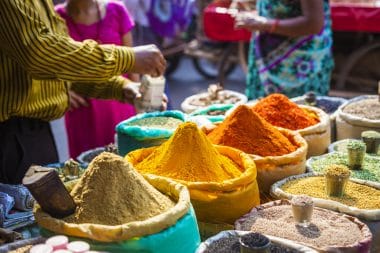
In the immediate vicinity of the Lodi Gardens is the Khan Market. Here you can discover many international restaurants and shops. It is particularly popular with expats, as they are very likely to find all their favourite national foods here. Due to the many designer boutiques and jewellers, it is also a meeting point for the more affluent inhabitants of New Delhi.
Dilli Haat
If you are looking for traditional handicrafts, you should not miss the Dilli Haat market. In addition to saris, handbags and jewellery, many other typical souvenirs are also offered for sale here every day. After shopping, a visit to the small restaurants and snack bars there is a good idea to try Indian delicacies.
Chandni Chowk
The Chandni Chowk shopping district includes a variety of markets in New Delhi’s Old Quarter. Here, typical Indian street food, such as samosas, is offered at numerous small stalls. Tourists are particularly enthusiastic about the many foreign smells as well as the variety of colors and spices. If you want to learn more, you can take part in one of the famous food walks. There, culinary insider knowledge is imparted and a wide variety of dishes are tasted.
New Delhi’s Places of Worship
Jama Masjid
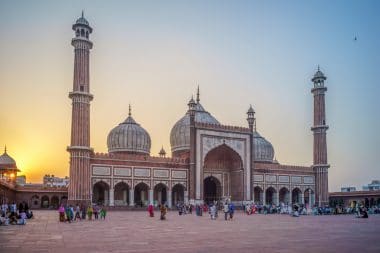
In addition to the Taj Mahal and the Red Fort, Shah Jahan had the Jama Masjid built. The largest mosque in India is also made of red sandstone and black and white marble and is located not far from the Red Fort. When visiting, tourists must be careful to wear long clothes and not to come during prayer times, as it is then not possible to enter.
Gurudwara Bangla Sahib
The flagpole, wrapped in orange cloths, is the sign that characterizes every Sikh temple. Those in need of help should see him from afar. Here, everyone who needs it can get medical help, meals and overnight accommodation – free of charge. The Sikh community is considered to be extremely helpful, as the support of fellow human beings is their top priority. At the Gurudwara Bangla Sahib , you can marvel at how food is prepared for up to 50,000 people every day. And the golden interior of the temple is also worth a visit.
Lotus Temple
This Baha’i temple was built in the shape of a lotus flower and opened in 1986. Every year, around three million visitors enjoy the extraordinary architecture and this place of silence. The nine gates of the Lotus Temple symbolize the openness of the Baha’is to any kind of religion.
Akshardam
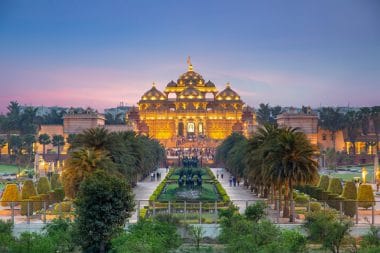
The Akshardham Temple and the surrounding grounds are one of the largest temple complexes in the world. It was opened in 2005 and, in addition to the Hindu temple, offers its guests several exhibitions, gardens and modern things, such as a water show. Within five years, about 11,000 construction workers and volunteers created this magnificent structure. In 2007, it was included in the Guinness Book of World Records.
Special festivals in New Delhi
New Delhi is loud and colorful. The joie de vivre conveyed by this can be experienced especially on the Indian holidays.
The Holi Festival
Holi is the spring festival of the Indians and is based on the calendar of the Hindus. On the first full moon day of the month of Phalgun, friends and families in northern India meet to splash each other with water and throw colorful color powder at each other. The color is intended to make all people equal and no longer differentiate according to gender, religion or caste.
Diwali
Diwali is also a Hindu festival, but is also celebrated by many followers of other religions. At this festival of lights, Indians decorate their homes with colorful lights and decorate them solemnly. Traditionally, fireworks are also set off, which has now been banned due to the air quality in New Delhi.
Culinary specialties in New Delhi
If you visit New Delhi, you won’t be able to eat enough of the countless different dishes. In addition to the filled dumpling, the samosa, and the fried snack pakora , the famous biriyani, a rice dish, should definitely be tried. At the end of every Indian meal belongs the enjoyment of a sweet. Jalebi, a confectionery with sugar syrup, is ideal for this. A masala chai, a tea with milk and spices, rounds off the meal perfectly.


